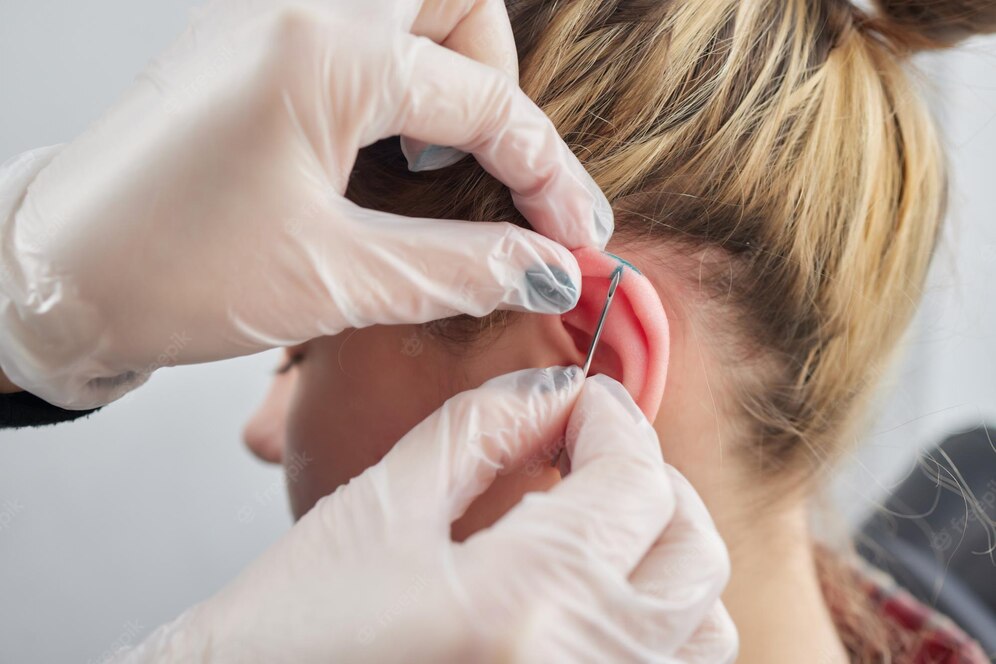These days, getting your ears pierced is a relatively common practice. The accessory of the moment is ear piercings that have been meticulously and tastefully cultivated. And although it is ultimately up to you to decide the kinds and combinations of ear piercings you want, we are here to provide you with the information you need to make an educated choice.
So, keep scrolling to find out some of the best designs for ear piercings that you need to check out!
High-Lobe Piercing
A high-lobe piercing is a fun and exciting way to add some flair to the lobe. These ear piercings are very helpful for concealing a badly placed piercing that you may have had done in the past and turning it into a distinctive aspect of your appearance. Because the lobe is so fleshy, the amount of piercing pain is far lower than average, coming up at a score of two out of 10.
Although the recovery period is quite short, lasting just six to eight weeks, this does not imply that you can be careless with the aftercare required of you. You need to make sure that you constantly follow the aftercare and maintenance guidelines that the piercer gives you.
Industrial Piercing
The industrial ear piercings consist of a straight barbell that is inserted through one cartilage piercing on the top ear and then into another cartilage piercing. The level of discomfort is a six out of 10. Because there are two holes made in the cartilage rather than just one, it is more difficult for them to mend. Since the two are likewise related, people tend to get agitated rapidly and often continue in that state.
Read more: Beginner’s Guide To Septum Piercings
Conch Shell Piercing
The piece of the cartilage in the center of your ear known as the conch was given its name because of its similarity to the spiral shell that has the same name. It may be pierced with a stud for a subtle look, a double stud (if you’re feeling daring), or even a cuff that can hug its way around the edge of your ear. It is pretty adaptable and can be pierced with any of these three options.
Tragus Piercing
When decorated with a lovely stud or a fitted hoop, the tragus, which is that little flap that partly covers the ear canal, may give detail to any cultured ear. This is particularly true when the tragus is pierced. Because the tragus piercing is done via cartilage, you may anticipate a degree of discomfort that ranges between four and five on a scale from zero to ten.
When advancing from the lobe, helix piercings, which are piercings that are inserted anywhere on the top outer cartilage of the ear, are often the initial option. This trending flat piercing has grown even more popular recently, and both piercers and customers are experimenting with having many helix piercings on one ea.
Daith Piercing
To access the Daith, which is located in a rather precarious location (the hoop that grips the cartilage on the inside of your ear), an experienced piercer is required. It is also said to be effective in reducing the severity of migraine headaches. When having the Daith pierced, you will feel a mild pressure similar to that of a five or six out of ten, with ten being the worst agony possible.
Read more: Everything to know about Daith Piercing
In terms of the amount of time needed for healing, the Daith piercing typically takes anything from six months to nine months on average. It is not recommended to sleep on a Daith piercing until it has completely healed, as is the case with any new piercing; nevertheless, in comparison to piercings in the outer ear, sleeping on a Daith piercing within a couple of months is very typical.

